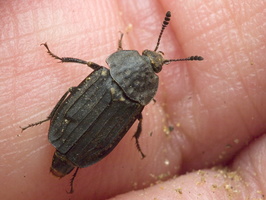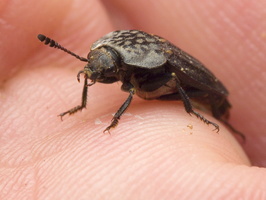- sort orderDefault
Photo title, A → Z
Photo title, Z → A
✔ Date created, new → old
Date created, old → new
Date posted, new → old
Date posted, old → new
Visits, high → low
Random - Google Map
- map
 home / Insecta · vabzdžiai / Coleoptera · vabalai / Silphidae · maitvabaliai / Thanatophilus sinuatus · smailiapetis maitvabalis
home / Insecta · vabzdžiai / Coleoptera · vabalai / Silphidae · maitvabaliai / Thanatophilus sinuatus · smailiapetis maitvabalis

Thanatophilus sinuatus · smailiapetis maitvabalis
- Silpha sinuata
- Lappet ådselbille
- Gerippter Totenfreund
- silohaiskiainen
- smailiapetis maitvabalis
- pościerwka pospolita
- spetsvingad skinnarbagge
- ukbeetles.co.uk/thanatophilus-sinuatus
- naturespot.org.uk/species/thanatophilus-sinuatus
- gbif.org/species/4448510
Widespread and generally common throughout Europe north to southern provinces of Norway, Sweden and Finland, also present on many of the Mediterranean islands and parts of North Africa and extending east through Asia Minor and Russia to China and Japan. The species is likely to occur in any fairly open habitat on any kind of soil, especially open grassland but also wasteland and coastal dunes etc., it tends to avoid thickets and dense woodland but may occur in open wooded areas and wooded parkland. Adults are present year-round; they overwinter among tussocks or moss etc. and may burrow down to 15 cm in lighter soils, they are active from March until October and peak in abundance during May and June. They are attracted to any type of carrion and have also been recorded under dung or among other decaying organic matter; they fly well and may be attracted to host material over long distances. Mating usually occurs when the sexes meet at carrion, and females burrow under the host material to lay batches of eggs in the ground. Females are very fecund and each may produce up to 500 eggs, these are always laid in batches, the size of which seems to depend on the amount of host material available. Larvae emerge after a week or so and soon begin to feed on the carrion, they develop rapidly and will pass through three instars within a month, when fully grown they burrow into the soil and pupate. This stage lasts about ten days and newly emerged adults will undergo a period of maturation feeding before they leave the host material and disperse. From the phenology it is likely to be univoltine in Northern Europe but in central and southern regions there is thought to be two generations each year. Adults are mostly diurnal but are rarely found away from carcasses.
9-12 mm. Elongate and flat, body dull black although the forebody is usually shinier, dorsal surface with yellowish or grey pubescence, underside with golden-yellow pubescence, appendages black but for the tibial spurs and claws which are usually reddish. Head flat and finely punctured between convex eyes that follow the outline and short temples that converge strongly to a short neck, clypeus produced anteriorly from short and strongly converging cheeks. Antennae inserted laterally in front of the eyes, 11-segmented with segments 7 and 8 transverse and -11 forming a distinct and densely-pubescent club. Pronotum transverse, broadest in front of rounded posterior angles and narrowed to slightly projecting anterior angles, apical margin curved, basal margin sinuate laterally and widely produced and more-or-less straight across the middle, surface finely and densely punctured and strongly uneven throughout. Scutellum large and triangular, lateral margins angled near the base, and the apex acute. Elytral humeri with a small but obvious tooth (sometimes hidden under the pronotum), lateral margins usually more dilated in females, apical margins simply rounded in males, strongly produced along the sutural margin in females. Each elytron with three longitudinal carina and a transverse callus which raises the second and third carina behind the middle, cuticle finely punctured and flat; without tubercles. Front tibiae with small apical spurs, middle and hind tibial spur much longer, all tibiae with rows of fine spines. Tarsi with five simple segments except in males where the front tarsi are dilated.

